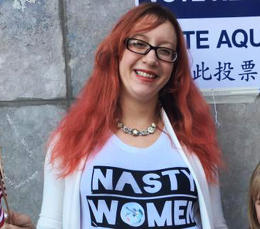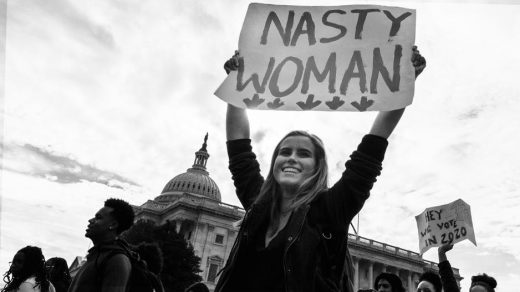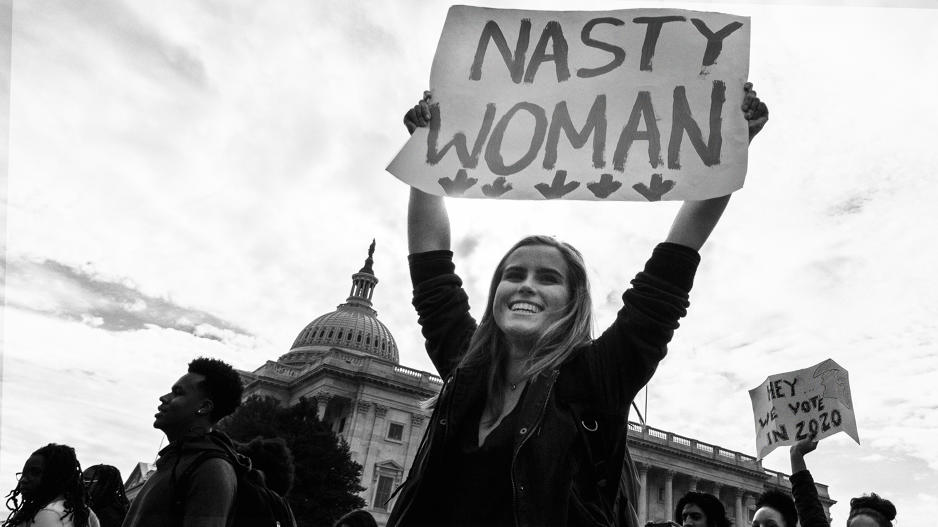Why The Women’s March On Washington Is More Than An Anti-Trump Protest
Like many voters in this country, Bob Bland was shocked by the election night results. “It seemed like everything was going so well,” the avid Hillary Clinton supporter tells Fast Company.
In the weeks leading up to the election, Bland had spent much of her time working on Nasty Woman & Co., a community website she launched that, among other things, sold over 1,500 T-shirts emblazoned with the viral comment that Donald Trump made during the third presidential debate in October. Shirt sales went to benefit Planned Parenthood.

And it all seemed to be going according to plan: On the eve of the election, the polls were largely in Clinton’s favor, and Bland felt confident and hopeful. Her 5-year-old-daughter, however, was not so sure. At 7:00 p.m ET, before tucking into bed, “She said, ‘Momma, tell Hillary I’m sorry,’” Bland recalls. “She knew before any of us did.”
Bland soon found herself mourning Clinton’s defeat and crying alongside fellow supporters. “The next morning you could hear a pin drop in Brooklyn,” she says.
But as despondent as she was, she gave herself only one day to process the shock. By Thursday, Bland was back in action, messaging similarly disheartened women in an online group. One of the women suggested a march on Washington following the inauguration. Then a few more, from Hawaii to Tennessee, suggested the very same thing. From the collective mourning of defeat emerged an audacious idea of solidarity.
“None of us knew each other,” Bland says of the group. “We just met online that day.”
Together, these strangers founded the Women’s March on Washington, to be held on January 21, 2017, the day after Trump is to be sworn into office, at the Lincoln Memorial. Per the march’s statement, it intends to “send a bold message to our new administration on their first day in office, and to the world that women’s rights are human rights.”
As of Friday, nearly 300,000 supporters already RSVPd or expressed interest in attending on the national Facebook page, with more RSVPs counted on specific state pages. (As a personal disclosure, I have also RSVPd and intend to join the march.) The event is still in its infancy, but women have quickly taken to the cause. Numerous Facebook posts attest to supporters taking the march seriously, working together to coordinate flights, housing, transportation, even attire.
“Our town in New Jersey has filled up six buses and is working on a seventh,” writes one. “Coming from Houston. Meeting three girlfriends (so far) there—one from South Dakota, one from South Carolina, and one expat currently living in Stockholm,” writes another.
“Surprise is the most subtle word possible for what I feel right now,” said Bland, who is eight months pregnant and didn’t foresee herself volunteering 18 hours a day on such an ambitious project. “None of us [organizers] anticipated this, but we’re so inspired.”
But while Bland may not have anticipated her involvement in this burgeoning movement, she said the alternative—moping around and complaining on digital forums without action for the next four years—did not appeal to her either. “[Organizing] is very energizing; otherwise, I’d just be sitting there scrolling my Facebook and crying.”
The organizers are planning a rally followed by a march, for which all (including men) are encouraged to attend. The national organizers are working with experienced professionals who have produced marches of this level to secure the permitting process. It takes time. “We’re not worried about it,” said Bland.
Speakers and entertainment are on the agenda, although they have not yet been finalized. Other organizations have reached out to partner with the march, though organizers are not yet at a point to formally announce partnerships. They have yet to fill other necessary positions in publicity, marketing, and social media strategy.
For the most part, Bland is concentrating on aligning the national coordinators with state coordinators, who volunteered via social media to manage their respective states’ Facebook pages at their local level. It’s a bottom-up, grassroots organization.
A Message Of Inclusion
Bland and her co-organizers see their march as inclusive, championing the voices of those who felt they have been harassed, threatened, marginalized, or put on the sidelines as as result of the last election cycle.
“We want them to know that we are there for them collectively,” she explained. “We will show that we are powerful, our lives have meaning and that we do make a difference and we will make a difference by coming together.”
Bland said she does not consider the Women’s March an anti-Trump protest. That labeling, she holds, only further marginalizes and diminishes women, trying to once again, make it “all about a guy.”
“It’s not a protest; it’s a pro-women’s rights march,” she stressed. “Is it such a hard thing to have a women-centered event? I think we constantly put ourselves on the sidelines, whether it’s conscious or subconscious. This our opportunity to talk about a huge issue.”
At the same time, however, Bland does concede that the march was predicated by a portion of the population whom she describes as “profoundly shocked and appalled” that Trump was elected. And does Bland think part of Clinton’s loss was due in part to her being a woman? “Absolutely.”
As the CEO & Founder of Manufacture New York, a fashion design and production incubator for independent designers, Bland talks of the gender inequality she herself has endured in her own industry. She’s tired of what she described as over preparing and over working just to compete with her fellow male peers.
“I’m supposed to be nice and fun and serious and at the same time,” she said. “Then still, most of the time, I’m lucky if I get 10% of attention that any man gets.”
This precise moment in history, Bland holds, isn’t just a tipping point for women; it’s a tipping point for people of color, immigrants, the religiously persecuted, people who identify as LGBTQIA, and anyone else who feels alienated or targeted. “We’ve seen [people] come out and say ‘I’ve had it,” she said.
Bland is fired up, and intent on growing her network beyond the January march. Along with her co-founders, she’s pursuing status as a nonprofit and social welfare organization.
“Even after the march, we want to continue on as an organization and a movement to promote gender parity and equity in society and in leadership,” she stated. “We want to keep this conversation going.”
None of this was in the plan, but then again, from her perspective, neither was the election outcome.
“At the time, none of us had any idea how much [the march] would resonate with women and our male allies all over the country,” she said, “but it has given us something to look forward to.”
Fast Company , Read Full Story
(124)














